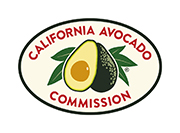AVOCADO SAMPLE ESTABLISHMENT AND PRODUCTION COSTS AND PROFITABILITY ANALYSIS SAN DIEGO AND RIVERSIDE COUNTIES, ORGANIC PRODUCTION PRACTICES
In this study, we provide up to date costs of establishment and production and profitability; benchmark indicators for evaluating the viability and sustainability of organic avocado production. This study is based on assumptions of organic avocado orchard establishment and production practices that are considered typical in San Diego and Riverside counties and is based on 10 acres orchard. Data regarding production practices, inputs and prices was collected from growers, the University of California Cooperative Extension (UCCE) farm advisor, agricultural institutions, and supply and equipment dealers.
AVOCADO SAMPLE ESTABLISHMENT AND PRODUCTION COSTS AND PROFITABILITY ANALYSIS FOR SAN DIEGO AND RIVERSIDE COUNTIES, CONVENTIONAL PRODUCTION PRACTICES
In this study, we provide up to date costs of establishment and production and profitability; benchmark indicators for evaluating the viability and sustainability of avocado production. This study is based on assumptions of orchard establishment and production practices that are considered typical in San Diego and Riverside counties and is based on a 20 acres orchard. Data regarding production practices, inputs and prices was collected from growers, the University of California Cooperative Extension (UCCE) farm advisor, agricultural institutions, and supply and equipment dealers.
Pest Management Guidelines for Agriculture: Avocado
These practices are recommended for a monitoring-based IPM program that enhances the use of IPM practices to reduce the risks of pesticides on the environment and human health. This year-round IPM program covers the major pests of avocados in California. Details on carrying out each practice, example monitoring forms, and information on additional pests can be found in the Avocado Pest Management Guidelines.
Surveying Avocados in the Baja Peninsula for Pests that May Enter California
Over the period 23-25 January 2011 residential areas in Tijuana Mexico were surveyed for the presence of avocado trees, and when possible trees were inspected for arthropods associated with trees. Google Earth was used to pre-select six separate residential areas that showed high levels of greenery (i.e., parks, and well maintained residential gardens). In these six areas, 267 residential street blocks were surveyed. From these blocks, a total of 634 properties were inspected from the road. The percentage of street blocks with avocados in pre-selected sections of Tijuana ranged from 23% to 45% of blocks having at least one tree. A total of 80 avocado trees were found from these surveys. Of surveyed properties, 10% or 64 properties had at least one avocado tree. The number of avocados per property ranged from 1 to 5 trees. The GPS coordinates were recorded for each tree and when possible foliage was inspected for avocado pests.
Biology and Management of Avocado Lace Bug in California 2008
This research project will be ending October 31, 2008 and we are on schedule to accomplish all of the major goals laid out for the project. Although the avocado lace bug (ALB) has not spread into commercial avocado orchards in California, we could not have predicted ahead of time that this would not happen and it is possible a more virulent strain might be introduced into California at some point in the future. In some areas of the world, ALB is a very serious pest on avocados.
Results of Field Surveys for Neohydatothrips burungae in California
To manage foliage and fruit damaging thrips it is imperative to determine how widespread and abundant N. burungae is in comparison to S. perseae. Field surveys undertaken to delineate the range inhabited by N. burungae, its abundance in comparison to S. perseae, and its seasonal phenology will greatly aid understanding when assessing the potential pestiferousness of this new invader.


